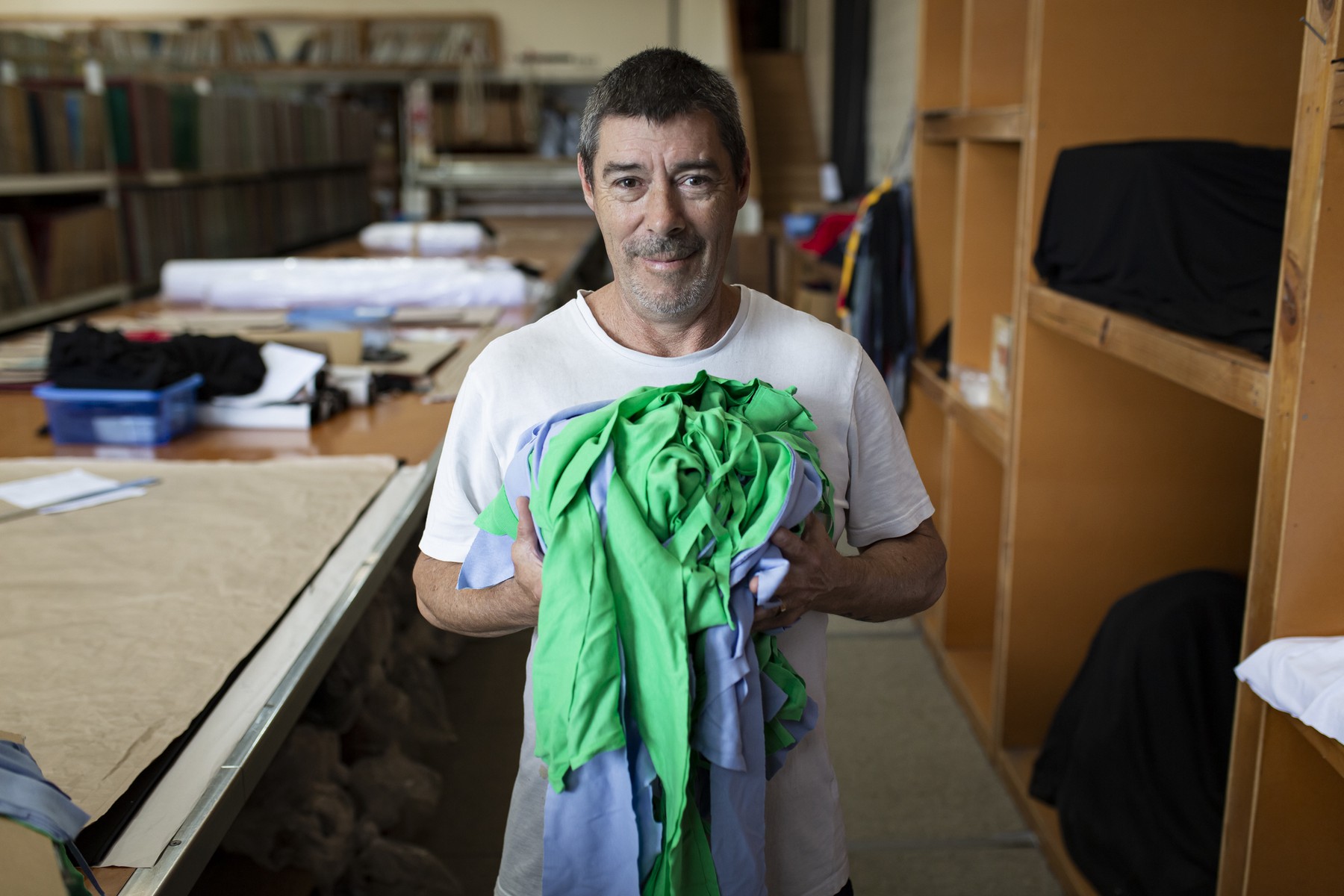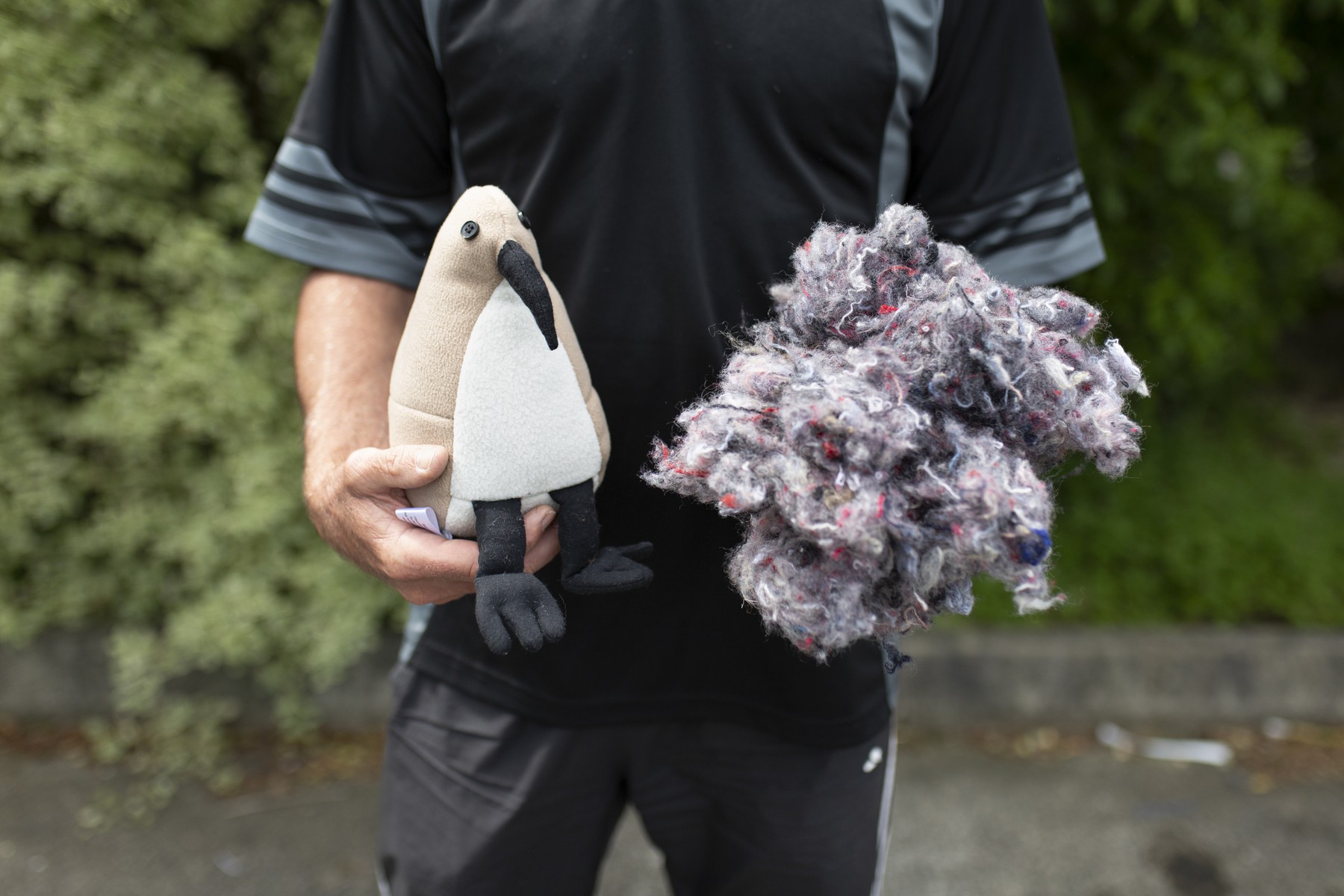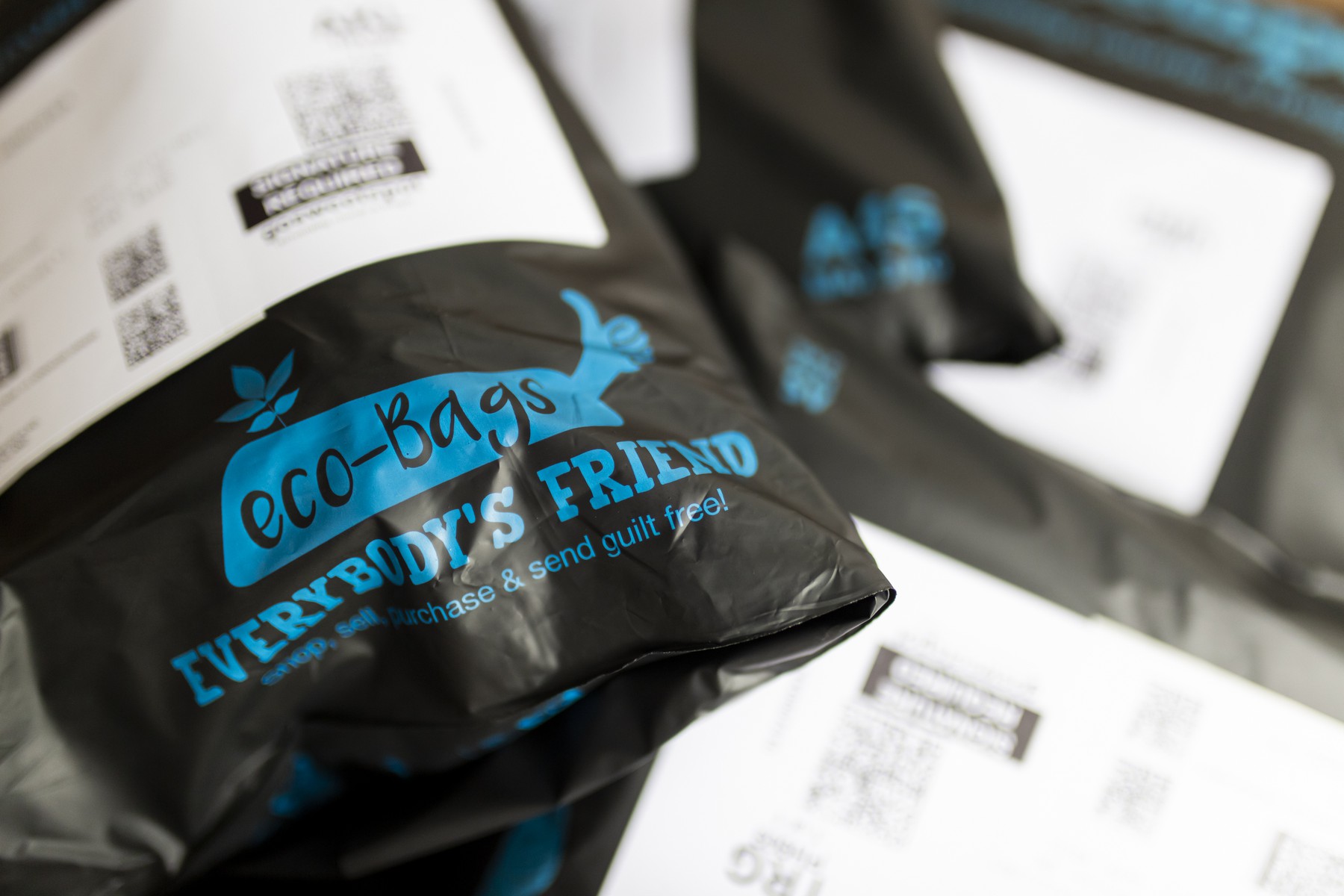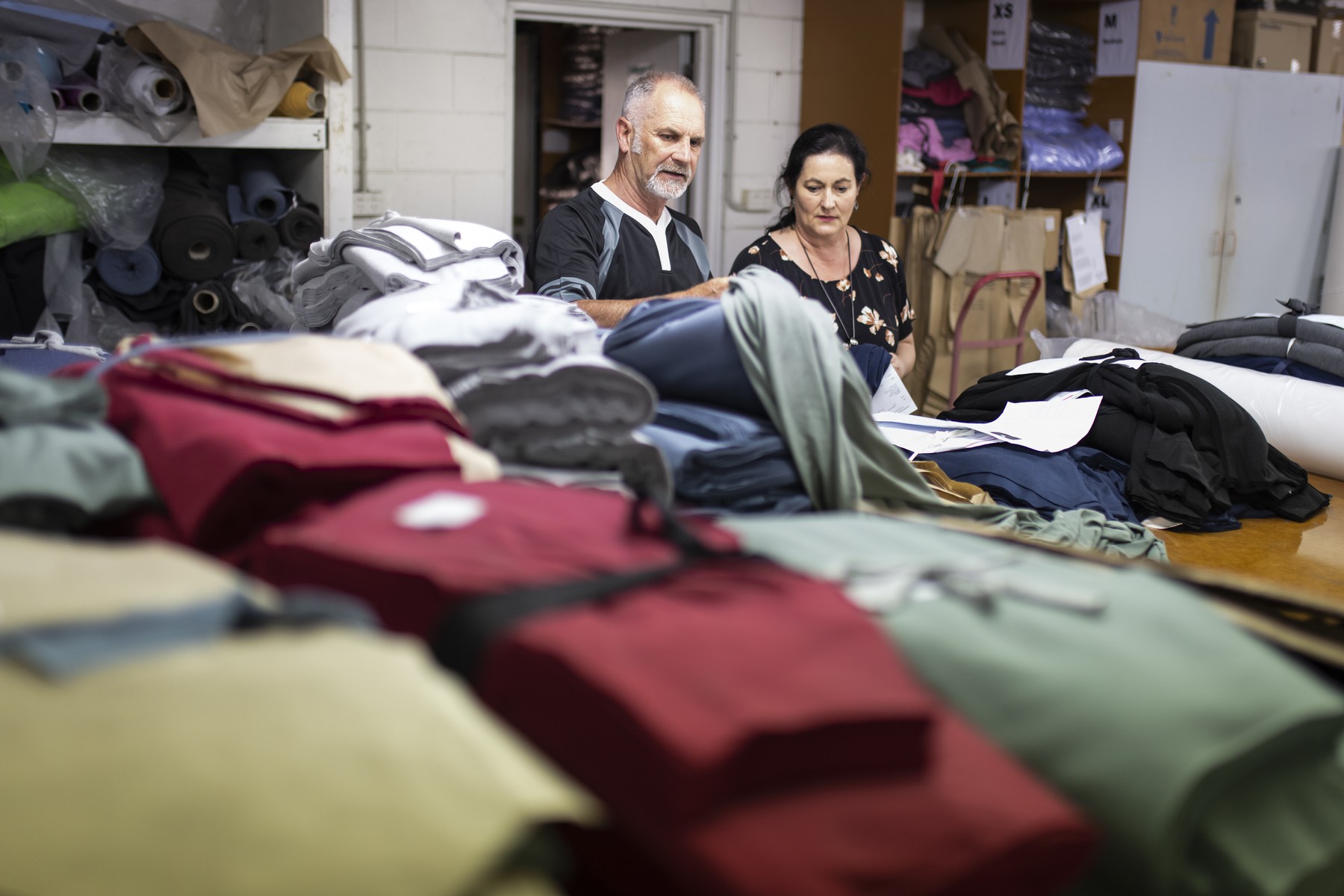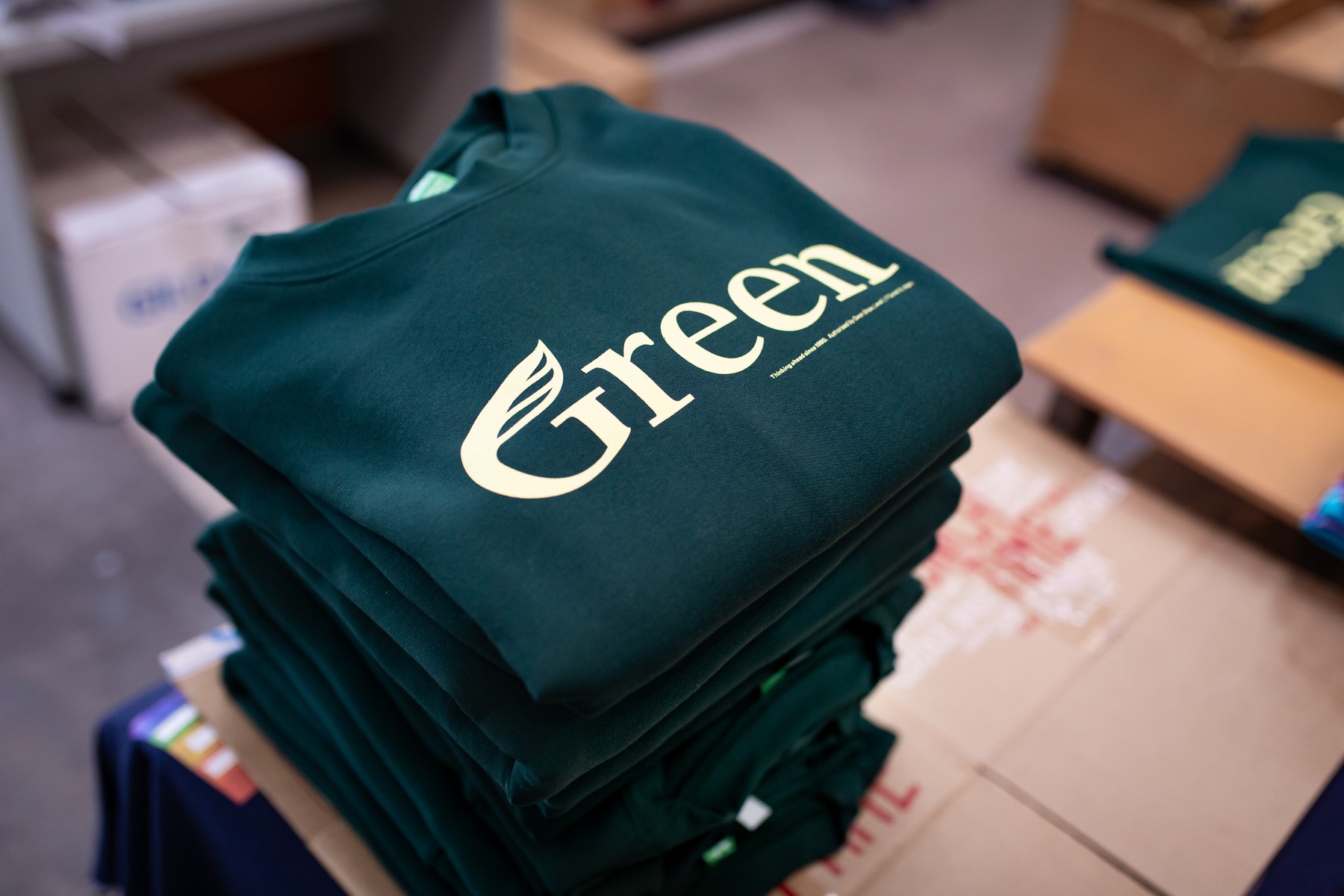In the apparel and printing industries, which often attract valid criticism for their environmental impact, Seabreeze aims to take a more sustainable approach.
Mon March 7th 2022
It’s easy to say you care about sustainability. But unless what you say is backed up by your actions, it’s all talk. For Seabreeze, the clients who choose to work with us are proof that we really do walk the walk. We have a number of clients who have sustainability as a central part of their ethos; brands like Alivate and Maggie Marilyn trust us as a supplier, as do the Green Party. Why? Because they know we share their commitment to the good of the planet and see it demonstrated in the way we work. What does working sustainably look like for Seabreeze? There are a few key areas.
As one example, we work really hard to efficiently cut our fabrics to minimise the amount of offcuts we produce. And what we do have left over gets recycled or reused wherever possible. All of our merino off cuts go to a textile products company that turns the merino wool fabric into insulation filler.
They also supplied us with a recycled wool stuffing that we used in a prototype we developed in 2020: a Kiwi soft toy that’s sold in the gift shop at Waitomo Glowworm Caves. This was a pioneering collaboration with Tourism Holdings Limited. They have a strong sustainability focus across all of their businesses and the toy kiwi we made for them was a great example of the circular economy in action. The wool scraps are biodegradable and would eventually break down in landfill, but reusing and recycling give them a second life.
While this one hasn’t taken flight yet, due to COVID-19’s impact on the tourism industry, it’s the kind of project we love exploring with our clients. We hope we get to put it into production in the future.
We also support our clients’ sustainability efforts simply by being local. Most clothing manufacturing happens overseas now, at least for the mass market, with a significant carbon footprint. That’s how fast fashion — and considerable waste — is produced. The fact we are manufacturing here in New Zealand means we sit outside the apparel production mainstream.
As well as being more environmentally sound, it’s a solid business decision. We see that companies that are committed to being locally made are selling to a very discerning group of consumers — and it’s a group that’s growing. We reckon it will continue to grow too. More and more people are looking for skilled craftsmanship and products with an authentic, New Zealand made story behind them and are prepared to pay a premium for it. We like to work with like minded businesses and are members of Mindful Fashion NZ.
There are other areas of our business where we're able to reduce our environmental impact. For example, the technology behind screen printing inks has come a long way; where printers once had to use thousands of litres of water to clean leftover ink out of their screens, the composition of modern inks makes them easy to clean up and there’s no need to send vast amounts of polluted water down the drain. We also keep our power usage as low as possible, relying on natural gas to run our dryers, for example, and make use of recycled cardboard and boxes, along with compostable courier bags, to reduce the amount going to landfill.
Wherever possible we opt for good environmental practices which, to be honest, are often the best commercial practices too. It’s simply good business. And they support our underlying philosophy that if all of us do a lot of little things, that can make a big difference.

